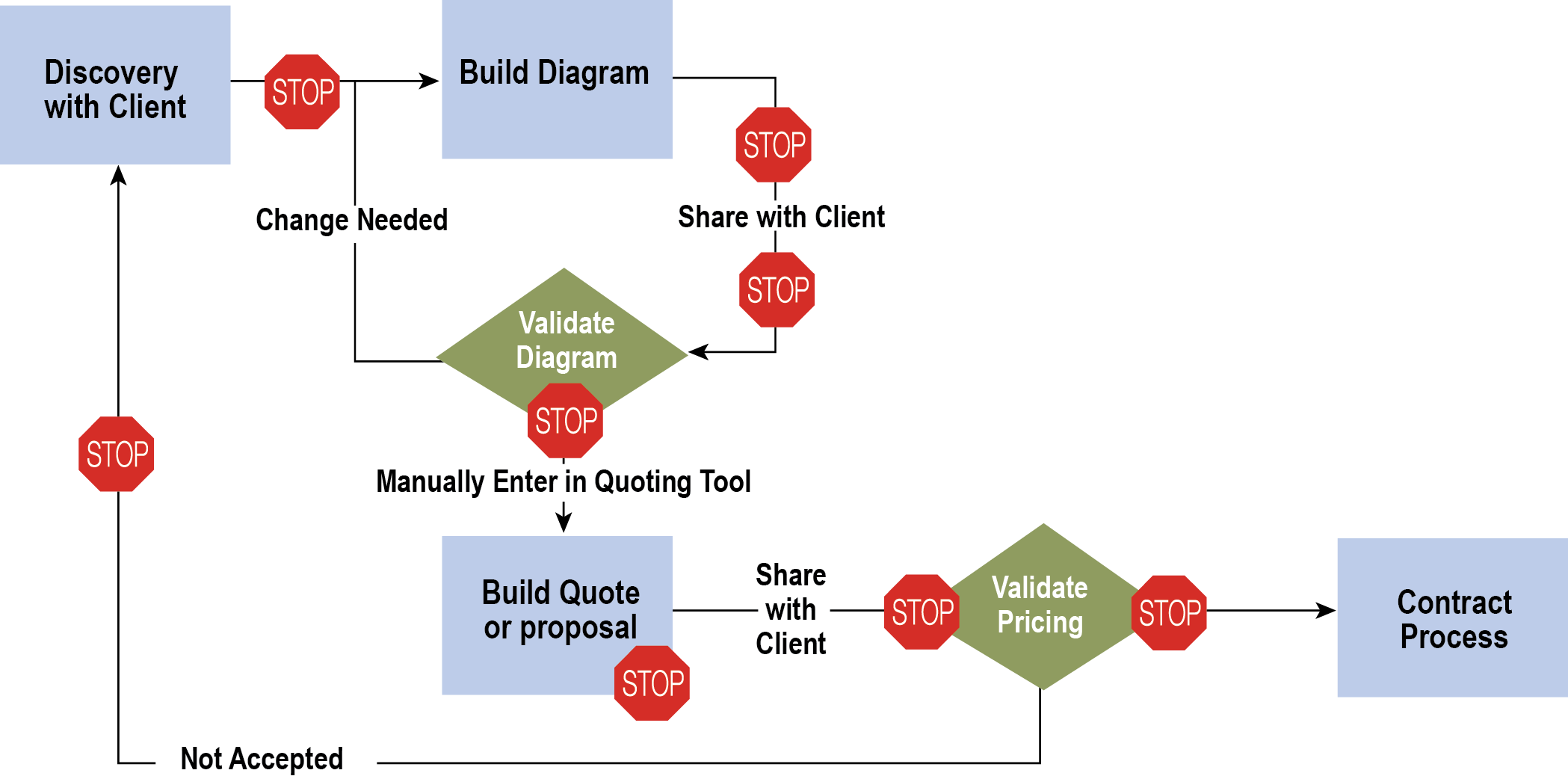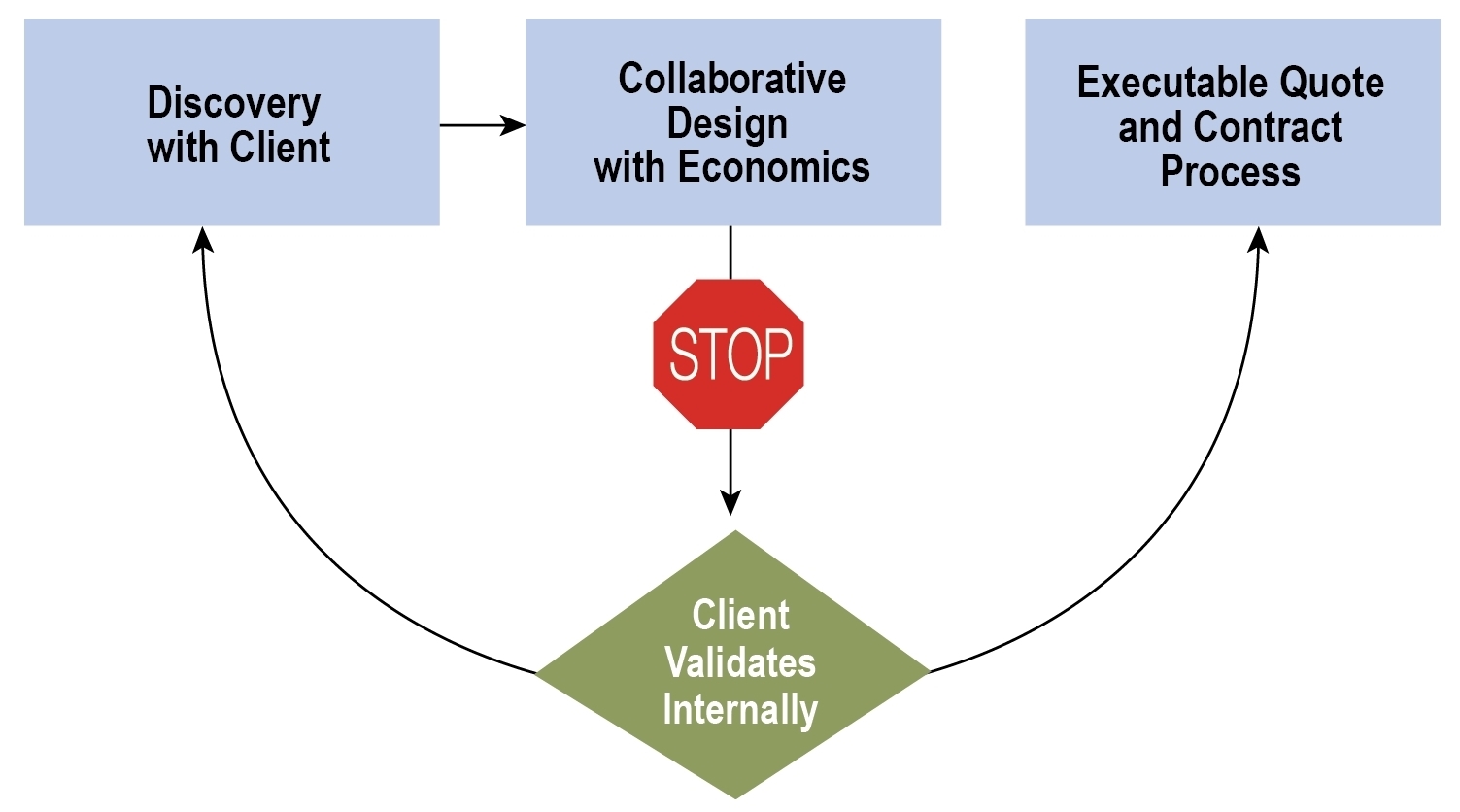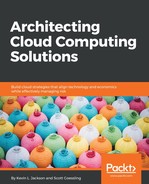The cloud is changing everything. Change occurs every day in the cloud services market. Changes to solutions, services, pricing models, consumption models, and locations all lead to different strategies, technology choices, economic impacts, and risk profiles.
Today, it is a normal process for the consumer to express what solution and solution components they require in the form of an RFI, RFP, RFQ, or some other type of requirements document, emailing a spreadsheet, for example. The consumer expresses what their experts need based on a mix of data sources, including business requirements, current state information, and the latest innovative articles read by a partially involved IT leader. Requirements are sent to one or more providers with the providers expected to respond to what is requested. Pricing is normally added and the response returned with minimal, if any, insight given. There may be a few phone calls and some back-and-forth, enabling the service provider to respond as accurately as possible.
Current processes feel very transactional: I want a blue shirt, or I want a French cuff, button-down, blue dress shirt; please show me the blue shirts you have and how much they are. This process pattern is very manual and very slow. The process is filled with stop-and-go workflows and communication patterns. This kind of process is also serial, meaning that each step must be completed before the next can start. Tools used to communicate and share data are also manual, disconnected, and slow.
Today's process looks something like the following diagram. This view is from the service provider side as they formulate a response. Everyone involved in the process (consumer, provider, integrator, consultant, and channel partner) follows virtually the same engagement pattern:

The cloud is completely turning this engagement method upside down and sideways. This method no longer works. The market is changing too fast. Products and services are released, updated, changed, or retired almost daily. How can the consumer side possibly build accurate solutions in a vacuum and pass it to a service provider for a response? It is impossible. The service providers can barely keep up with the pace of knowing their own product catalogs. There is no way the consumer can keep up with the thousands of available products and services from a service provider. Multiply that by the hundreds and thousands of potential service providers available in the market. Talking to two or three suppliers is no longer a representative sample set. Multiply those numbers by the hundreds of locations available globally. There are trillions of potential combinations available. How can a consuming enterprise possibly gather the data, normalize it, compare it, optimize design, and pick a strategic partner using the slow, manual, disconnected tools, and processes available today?
What needs to change? As stated, the process needs to be completely inverted. The tools need to be automated. Collaboration needs to be in real time. Insight needs to become a requirement, not an unexpected differentiator. Instead of pricing requirements, we need to design with economics in mind. Instead of building technical designs, we need to collaborate for solutions that align technology, strategy, economics, and risk. Instead of telling service providers what is required, business challenges and risks should be communicated. The thinking must change and begin to map solutions to business challenges and match technology to tasks.
With changes in mindset, process, and approach, executives can accelerate organizations, motivate teams, and increase control over strategy, economics, and risk. Engaging in insightful, collaborative ways can transform the previous slow, serial, stop-and-go methods into the following high-velocity, streamlined, parallel operating method:

